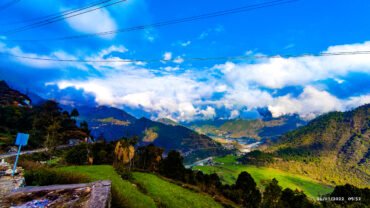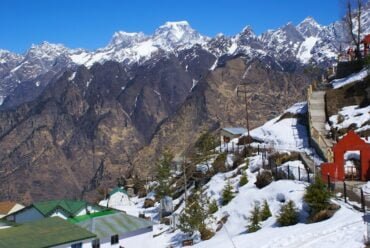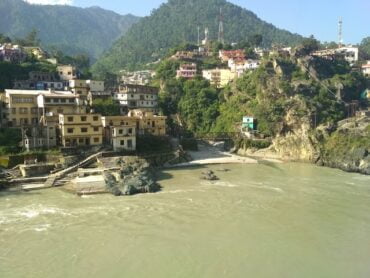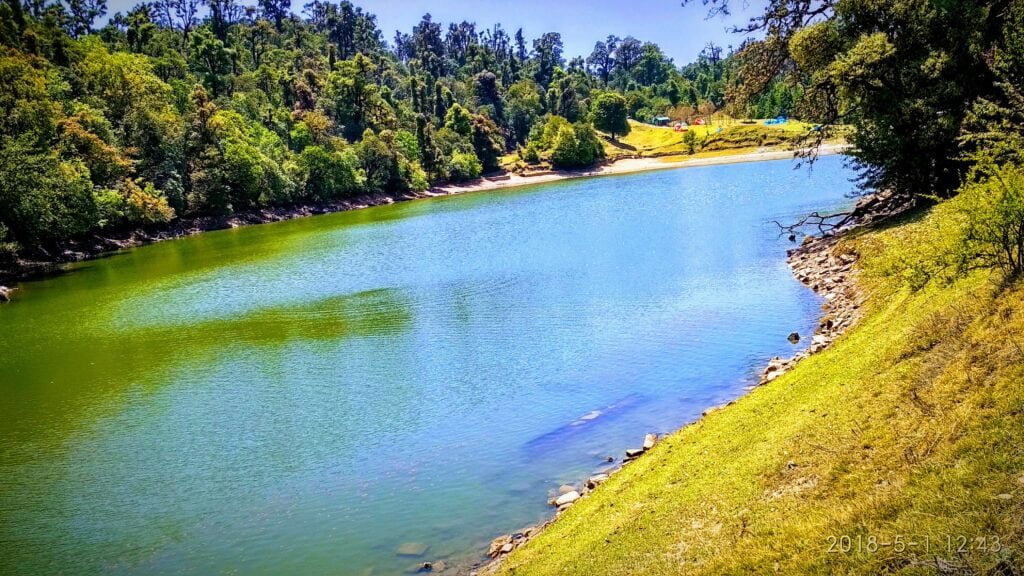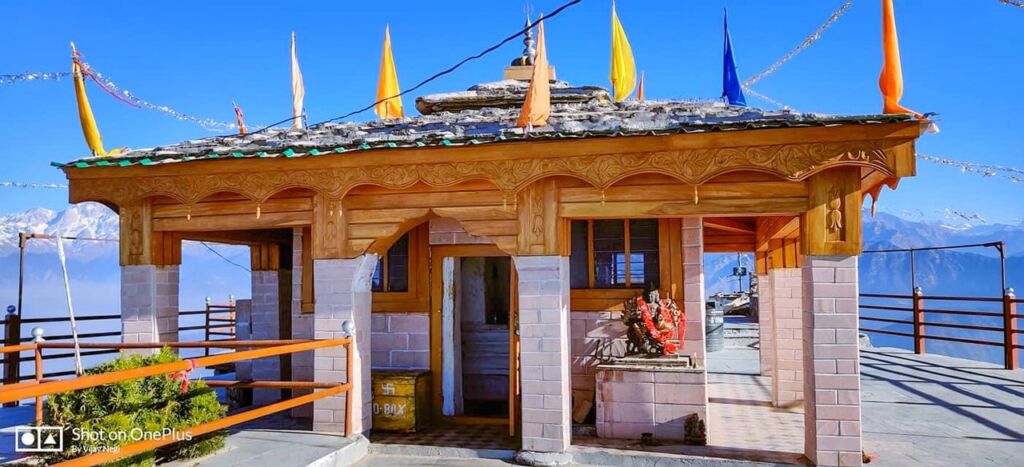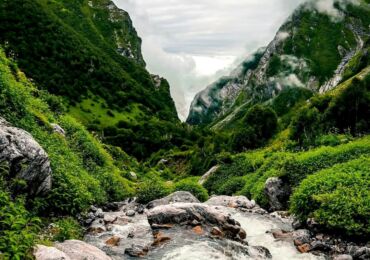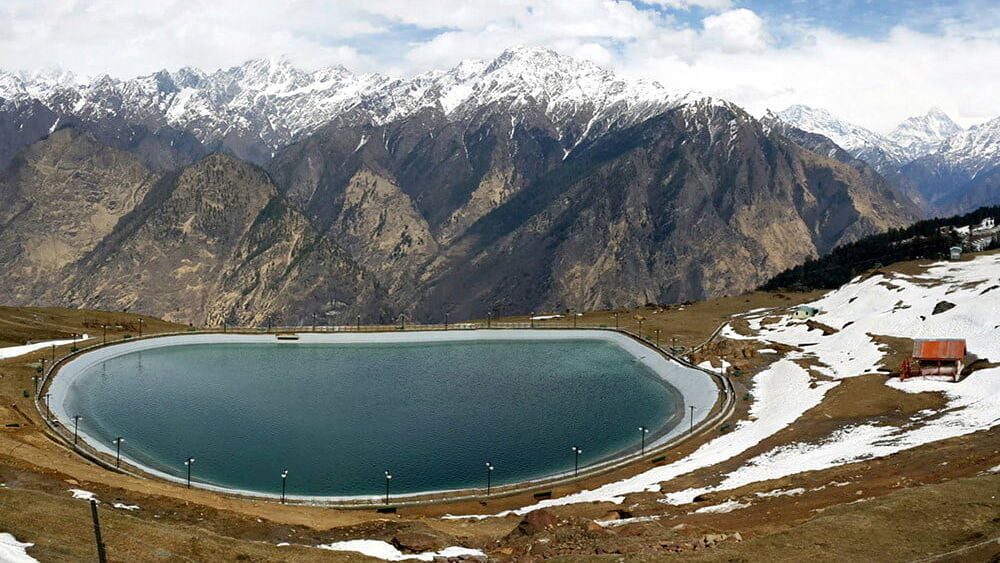Rudraprayag is named after Lord Shiva(Rudra), located at the holy confluence of rivers Alaknanda and Mandakini. Rudraprayag is 34 Km away from Srinagar Garhwal. The route to Badrinath and Kedarnath are separated from Rudraprayag, so this place has a very big importance. This place is filled with a lot of natural beauty, religious importance, lakes and other famous glaciers in the Rudraprayag district.
Rudraprayag, one of the smallest districts of Uttarakhand, lies on NH 58. The small town of Rudraprayag is located at the junction of the Alaknanda and Mandakini rivers and has special religious importance for many people all over India. The entire area is surrounded by lush green forests and natural beauty. There are some old and religious temples in the town you can visit while planning to see places in Rudraprayag. If you are planning to visit Rudraprayag and searching for hotels in Rudraprayag then there are some popular hotels there you can stay at. Some popular names are Monal Resort etc.
Tourist Places in Rudraprayag
Being a religious place, most of the places to visit in Rudraprayag are temples. Some famous temples in the town are Jagdamba Temple, Shiva Temple (Koteshwar Mahadev), Dhari Devi and Kedarnath Shrine. Kedarnath town is also located in the Rudraprayag district, the distance between Kedarnath from Rudraprayag is approximately 50.7 Km. Kedarnath is one of the most famous Shiva temples of Uttarakhand(char Dham) for Hindus, with 86 Km total distance(via vehicle + trekking).
There are 3 main tourist places in Rudraprayag where travelers and tourists can visit and spend their time. So let’s see the Rudraprayag sightseeing places where you should go if you are planning to visit Rudraprayag.
15 Places to Visit in Rudraprayag
So let’s take a look at the places you can visit in Rudraprayag Uttarakhand. If you are in Rudraprayag then you must consider visiting this place for sure.
1 – Koteshwar Mahadev – Shiv Temple
Koteshwar Temple is an ancient temple dedicated to Lord Shiva, located in Rudraprayag district of Uttarakhand, India. The temple is situated at the confluence of the Alaknanda and Mandakini rivers, which are considered sacred by Hindus.
The Koteshwar Temple is believed to have been built during the reign of the Pandavas, according to local legends. It is believed that the temple was visited by Adi Shankaracharya, a great Hindu saint and philosopher, who established the temple as one of the major pilgrimage sites in Uttarakhand.
The temple complex is surrounded by natural beauty and offers stunning views of the surrounding mountains and rivers. The main deity of the temple is Lord Shiva, who is worshipped here in the form of Koteshwar Mahadev. The temple also houses idols of other Hindu gods and goddesses, including Ganesha, Parvati, and Hanuman.
The temple is visited by thousands of devotees every year, especially during the festivals of Maha Shivratri and Navratri. The temple authorities also organize various religious and cultural events throughout the year.
In addition to its religious significance, the Koteshwar Temple is also a popular tourist attraction in Rudraprayag. Visitors can enjoy the serene and tranquil environment of the temple, as well as the scenic beauty of the surrounding region.
2 – Augustmuni
Augustmuni is a small town, or we can say the village of Rudraprayag district famous for Sage Agastyamuni temple located on the holy banks of Mandakini river. There are other temples and locations in Augustmuni that you can also visit. Augustmuni town is located on the river bank of river Mandakini in the Rudraprayag district of Uttarakhand.
3 – Chopta
Chopta is a picturesque hill station located in the Rudraprayag district of Uttarakhand, India. Situated at an altitude of 2,680 meters, it is popularly known as the “Mini Switzerland of India.” The region is surrounded by dense forests and offers stunning views of the Himalayan ranges, making it a popular trekking destination.
Chopta is also known for its biodiversity, with a variety of flora and fauna found in the region. The area is home to several species of birds and animals, including the Himalayan Monal, Snow Leopard, and Musk Deer.
One of the main attractions of Chopta is the Tungnath Temple, which is one of the Panch Kedar temples and is dedicated to Lord Shiva. The temple is located at an altitude of 3,680 meters and is the highest Shiva temple in the world.
Chopta is also the starting point for the Chandrashila trek, which offers breathtaking views of the Himalayan ranges, including the Nanda Devi, Trishul, and Chaukhamba peaks.
The best time to visit Chopta is during the summer months of April to June and the winter months of November to February. The region experiences heavy snowfall during the winter months.
Overall, Chopta is a must-visit destination for those seeking a peaceful and scenic getaway in the lap of nature.
4 – Tungnath
Tungnath is located in the Rudraprayag district of Uttarakhand on Chandranath parvat at a height of 3680 meters above sea level. It is the highest temple of Lord Shiva in the world. Tungnath is one of the sacred Panch Kedar. Tungnath is one of the best tourist attractions, Chopta is the trekking base to the Tungnath temple.
5 – Guptkashi
Guptkashi is another beautiful hilly town of Uttarakhand which is situated 47 km before the Kedarnath shrine. Ukimath is located on the Kedarnath route on the west side of Mandakini River valley at an elevation of, 1319 meters from the sea level. This town has religious importance because there are many ancient Hindu temples located nearby, such as Vishwanath temple and Ardhnareshwar temple.
6 – Kedarnath
Kedarnath is a sacred town located in the Rudraprayag district of Uttarakhand, India. It is home to the famous Kedarnath Temple, which is one of the four sacred sites in the Char Dham Yatra. The temple is dedicated to Lord Shiva and is believed to have been built during the 8th century AD.
Kedarnath is not only a significant pilgrimage site but also a popular tourist destination, owing to its scenic beauty and rich cultural heritage. The town is situated at an altitude of 3,583 meters and is surrounded by the majestic Himalayan ranges, including the Kedarnath peak.
Visitors can enjoy the serene and tranquil environment of the town, as well as explore the natural beauty of the region, which includes waterfalls, hot springs, and glaciers. The town is also popular for trekking and adventure activities such as camping, rock climbing, and rappelling.
Kedarnath is considered to be one of the best places to visit in Rudraprayag because of its unique blend of spirituality and nature. The town offers a perfect opportunity to connect with oneself and nature while exploring the rich cultural heritage of the region.
7 – Madhyamaheshwar
Madhyamaheshwar Temple is a famous Hindu temple located in the Rudraprayag district of Uttarakhand, India. It is one of the Panch Kedar temples and is dedicated to Lord Shiva. The temple is situated at an altitude of 3,497 meters and can be reached via a trek of approximately 16 km from Ransi village.
Madhyamaheshwar Temple is known for its unique architecture and exquisite carvings. The temple is also believed to be the place where Lord Shiva meditated after the death of his consort, Sati.
The temple attracts numerous devotees and tourists every year, who come to witness the beauty and spirituality of the region. Visitors can also enjoy the scenic beauty of the surrounding Himalayan ranges and indulge in trekking and other adventure activities.
8 – Omkareshwar
Omkareshwar is a Hindu temple in Rudraprayag district that is dedicated to God Shiva. The exact location of Omkareshwar temple, in Uttarakhand, is Ukhimath. The temple is located at an elevation of 1300 meters. The holy Doli Baba Kedar stays in this temple during winter from November to April month. When Kedarnath is covered with snow, the deity is brought to Omkareshwar temple and Baba Kedar is worshiped here during winter.
9 – Deoriatal Lake
Deoriatal Lake, located in the Rudraprayag district of Uttarakhand, India, is a picturesque freshwater lake surrounded by dense forests and majestic mountain ranges. It is situated at an altitude of 2438 meters above sea level and is considered to be one of the best tourist destinations in Rudraprayag.
The lake is known for its crystal-clear waters that reflect the beautiful surroundings, creating a mesmerizing sight. The trek to Deoriatal Lake is a popular activity among adventure enthusiasts as it offers breathtaking views of the Himalayan peaks like Chaukhamba, Kedarnath, and Neelkanth.
Apart from its natural beauty, Deoriatal Lake is also known for its religious significance. It is believed to be the spot where the Pandavas of the Hindu epic Mahabharata rested during their journey to heaven.
Overall, Deoriatal Lake is a must-visit destination for anyone traveling to Rudraprayag. Its stunning views, serene ambiance, and cultural importance make it a perfect getaway for nature lovers and spiritual seekers alike.
10 – Gauri Kund
Gauri Kund is the base camp city for the Kedarnath trek. It is a Hindu pilgrimage site and base camp for the trek to Kedarnath Temple, in Uttarakhand, India. It is situated at an altitude of 6502 feet above mean sea level in the Garhwal Himalayas.
11 – Kartik Swami Temple
Kartik Swami Temple is a famous Hindu temple located in the Rudraprayag district of Uttarakhand, India. It is dedicated to Lord Kartikeya, the son of Lord Shiva, and is one of the best tourist destinations in Rudraprayag.
The temple is situated at an altitude of 3050 meters above sea level and offers panoramic views of the surrounding Himalayan ranges. The trek to Kartik Swami Temple is a popular activity among adventure enthusiasts as it involves a challenging yet rewarding climb.
Apart from its religious significance, the temple is also known for its stunning location and breathtaking views. It is believed that a visit to the temple brings blessings and good fortune.
In conclusion, Kartik Swami Temple is a must-visit destination for anyone traveling to Rudraprayag. Its religious and cultural importance, as well as its natural beauty, make it a perfect getaway for spiritual seekers and nature lovers alike.
12 – Ukhimath
Ukhimath is a small town and a Hindu pilgrimage site in the Rudraprayag district of Uttarakhand, India. It is situated at an elevation of, 1311 meters and at a distance of 41 km from Rudraprayag.
These are some tourist places to visit in Rudraprayag where you can visit them with your friends, groups and families also. Some of the destinations are best to visit in summer and some in winter.
13 – Rudraprayag Sangam
Rudraprayag Sangam is the confluence of river Alaknanda and Mandakini at Rudraprayag. If you are in Rudraprayag then you must visit this place, especially in the evening. This place is so pleasing and calm. You can relax at this place and see the beauty of Alaknanda and Mandakini. The sunset from Rudraprayag Sangam gives another level of experience.

